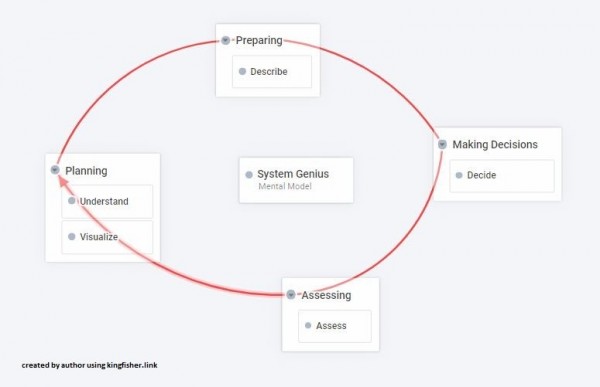Developing Vision in Foster Care
“There is nothing with which every man is so afraid as getting to know how enormously much he is capable of doing and becoming.” – Soren Kierkegaard
In The Foster Care Trinity: A New Theory, I discussed the creation of intelligent system geniuses. By “system genius” I am referring to those individuals working directly with foster children, such as social workers and foster parents.
Let me first discuss my thoughts on how a system genius should think about a problem or situation, how they should adjust their mental model integrating this thought process into a decision-making process, and then conclude with how they can develop a vision for improvement.
System Genius Visualization Process
Let’s take a look at how a systems genius should digest and think through a problem using the acronym UVDDA.
1. Understand – understand something in more depth through framing a situation and/or environment.
2. Visualize – think deeply about the problem and visualize the problem in your mind.
3. Describe – start forming your narrative about the problem in a way that is easy to describe to another person.
4. Decide – develop your approach to the problem, but most importantly, make a decision.
5. Assess – make a decision and move on. Do not regret the decision, yet seek continuous improvement through feedback and change your approach based on the feedback received.
Decision-Making Process

Let’s now integrate the visualization process into a decision-making process where a system genius will move through four phases.
1. Planning (Understand and Visualize)
2. Preparing (Visualize and Describe)
3. Making Decisions (Decide)
4. Assessing (Assess)
7-Step Vision Process
Now, let’s bring it all together by using the 7-Step Vision Process developed by Carey Walker and Matthew Bonnot at the Command General Staff College (CGSC) in Fort Leavenworth, Kansas.
Before we discuss the steps, let’s use a child entering foster care as an example. From the perspective of a social worker, we’ll dive into the 7-Step Vision Process.
1. Initial Assessment (Understand). Here, you are attempting to gain an initial understanding of the situation. For example, what type of environment was the child living in? What type of abuse took place?
2. Developing Vision (Visualize). This is where you will start to develop the what (vision) and the why (purpose). What is initially in the best interest of the child? Then ask “Why is this in the best interest of the child?
3. Establishing Goals (Visualize). Start working with the child and the stakeholders involved (i.e. foster parents and biological parents) and start developing goals that are in the best interest of the child.
4. Completing Vision (Visualize and Describe). Next, complete the vision (the how). Clearly identify the vision and goals for the child.
5. Refining the Goals (Decide). After the vision has been completed, continue to refine the goals with input from all stakeholders.
6. Prioritizing Tasks (Decide). Here, you will prioritize each goal from most important to least important and inform all stakeholders involved.
7. Implementing Change (Decide and Assess). Lastly, you will ensure full implementation of the vision and continuously assess/improve it.







